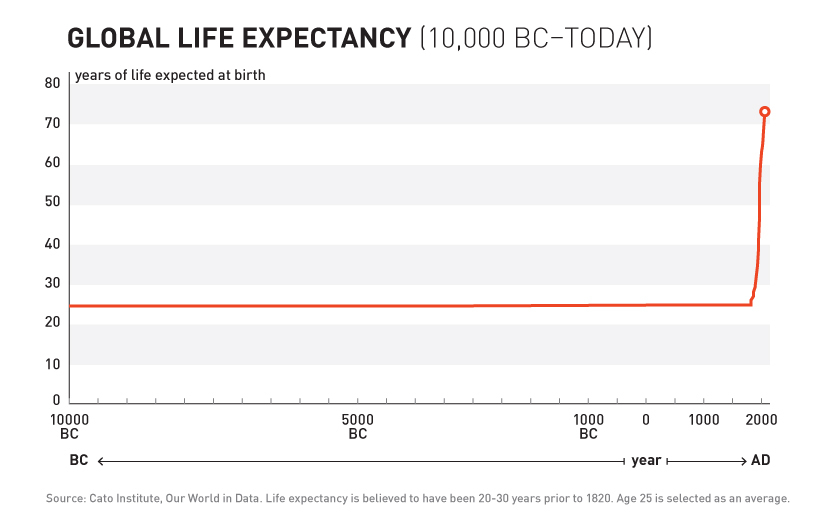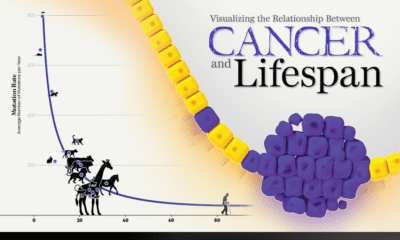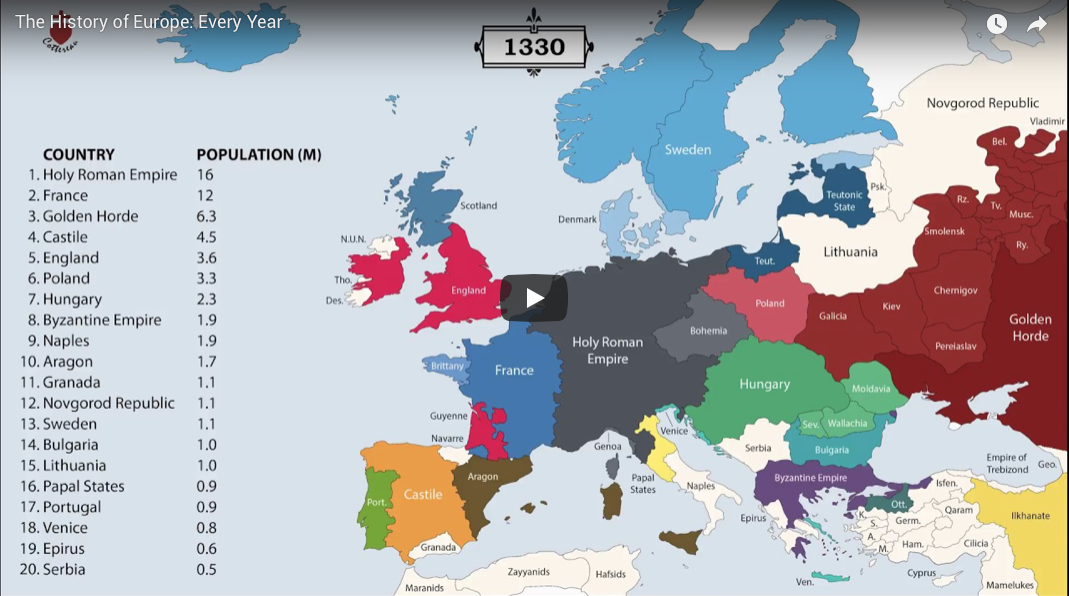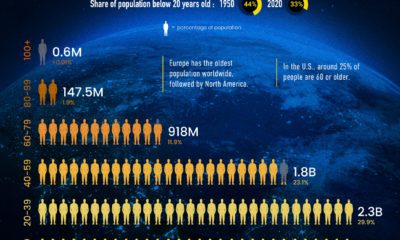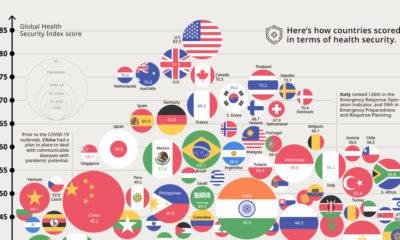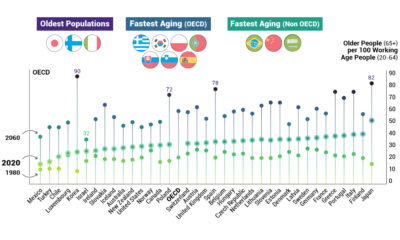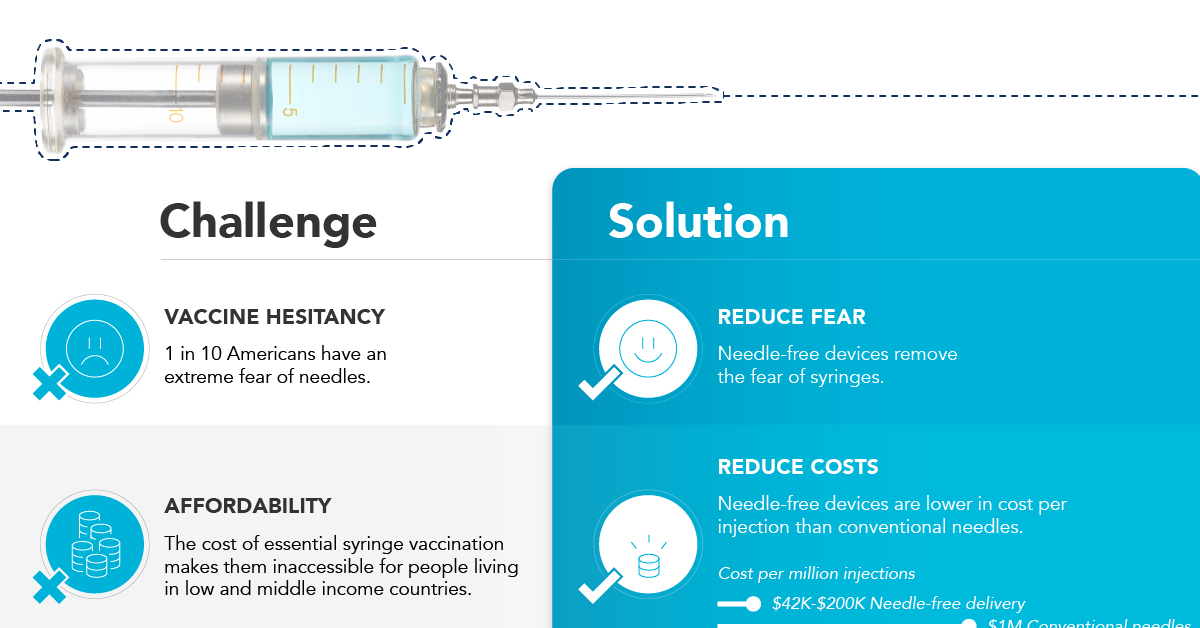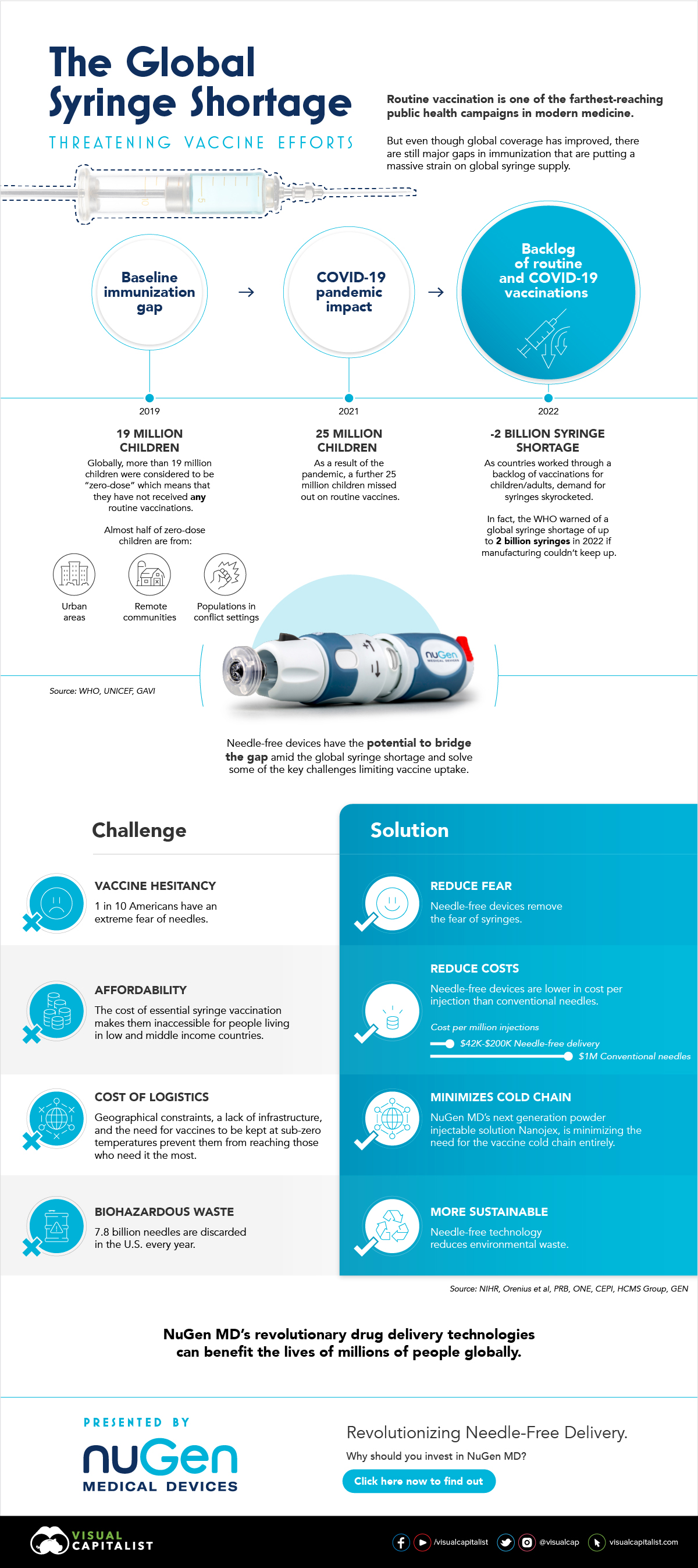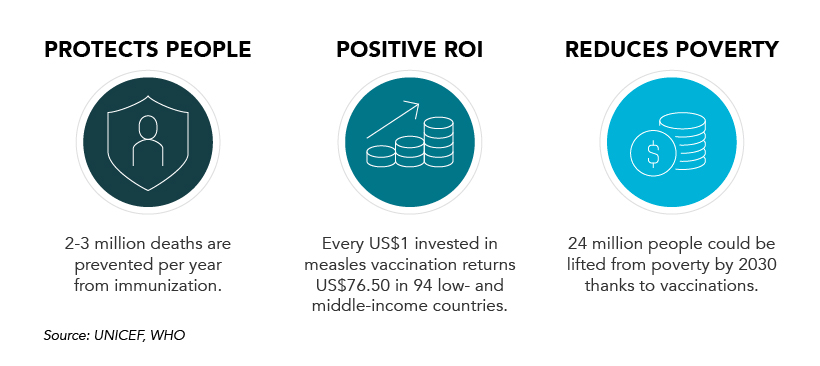But despite COVID-19 being the latest iteration in these deadly infectious diseases to strike, we are experiencing it in a very different public health context than past pandemics throughout history.
A New Era of Medicine
Since the onset of the 1918 influenza pandemic, humans have seen a monumental and undeniable leap forward in the health sciences. Advancements in everything from sanitation to pharmacology have spread globally, resulting in a health landscape that is almost unrecognizable from those during past disease outbreaks. While it’s not possible to demonstrate every life-saving advancement in medical knowledge in just one chart, the rise of life expectancy at birth can be a useful proxy. In just 65 years, modern medicine has propelled countries around the world to see a rapid surge in this crucial measure:
The above animation, which comes to us from Reddit user u/karthikvcp, provides a helpful reminder of just how much has changed in public health over recent decades. And although countries seem to move up following a linear line, here’s another look at this surge in global life expectancy on a much longer timeline — since the dawn of human civilization:
Yes, for most of human history, it’s been estimated that global life expectancy at birth has bounced between 20 and 30 years. Beginning approximately in the year 1820, global life expectancy started its exponential ascent, seeing its most impressive gains after 1950 as modern sanitation and medical advancements began to trickle down to developing nations.
Life Expectancy: Interactive Version
While the 13-second animation is a fast summation of the revolution that has occurred in public health, here’s an interactive version from Our World in Data that plots the exact same data:
Still at the Mercy of Nature
Although our understandings of epidemiology and disease treatment are better than they’ve been during previous pandemics, other aspects of modern society have still compounded to make COVID-19 a complex challenge for public health officials. Population density, frequency of travel, and a modern tendency to gather in large groups are all factors that have contributed to an initial spread of the virus that was faster and more widespread than anything humanity has ever seen. And so, even with our increased level of medical sophistication, it seems we are still at the mercy of Mother Nature — just in a very different set of circumstances than in pandemics past. on In the above infographic from NuGen Medical Devices, we explore the factors leading to the syringe shortage and take a look at the company’s innovative needle-free solution that could play an important role in closing the immunization gap.
The Immunization Gap
Even before the COVID-19 pandemic, millions of people around the world struggled to get access to routine vaccinations. In fact, as of 2019 more than 19 million children around the world were considered to be “zero-dose” which means that they did not receive any routine vaccinations. Moreover, when the COVID-19 pandemic hit, global immunization dropped even further with 25 million children missing out on routine vaccines in 2021 alone.
Why is Immunization So Important?
Vaccinations prevent against over 20 life-threatening diseases and save between 2-3 million deaths per year, making them—as the WHO describes—the foundation of healthcare systems and an indisputable human right. As countries work through a backlog of vaccinations to close the immunization gap that has worsened since the pandemic, demand for syringes has significantly increased.
The Result: A Global Syringe Deficit
In 2022, the WHO warned that we could see a shortage of up to 2 billion syringes if manufacturing can’t keep up. This could result in the severe disruption to routine vaccinations and promote unsafe recycling of syringes in order to administer vaccines. But the issue goes far beyond a supply shortage of syringes. COVID-19 has brought conventional syringe vaccines into sharp focus, with many criticizing the challenges associated with them. With conventional needles facing so many challenges, it’s no surprise that investors are taking interest in viable alternatives. What’s more, these alternatives don’t just apply to vaccinations, they can also work for people with diabetes, dentists, and pet care.
Enter Needle-free Devices from NuGen MD
Needle-free devices have the potential to bridge the gap in immunization amid the global syringe shortage, solve some of the key challenges limiting vaccine uptake, and more importantly, benefit the lives of millions of people.
How Do They Work?
NuGen’s needle-free devices use a simple spring-loaded mechanism which uses pressure to release the liquid drug and penetrate the skin. In less than one-tenth of a second, the drug is dispensed more safely and evenly compared to needle syringes. It’s also virtually painless and leaves no mark on the skin.
Interested in investing in NuGen Medical Devices? To learn more about their plans to pioneer the future of needle-free drug delivery, click this link now.
